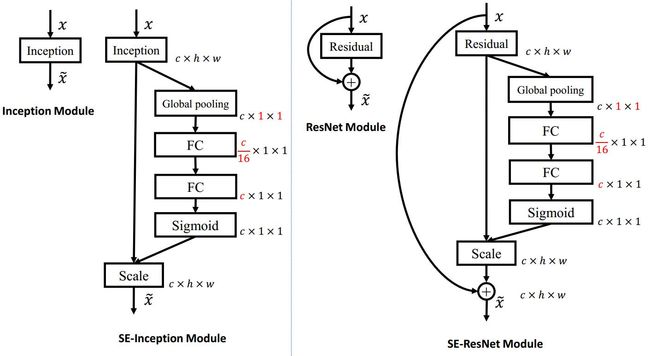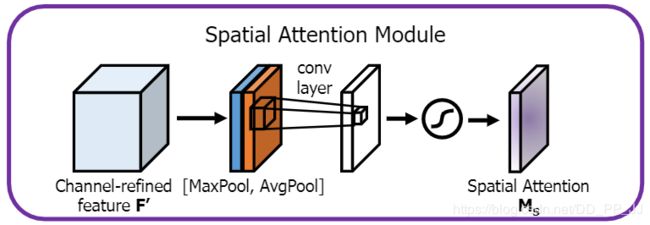- KTransformers如何通过内核级优化、多GPU并行策略和稀疏注意力等技术显著加速大语言模型的推理速度?
魔王阿卡纳兹
大模型知识札记语言模型人工智能自然语言处理
KTransformers通过内核级优化、多GPU并行策略和稀疏注意力等技术显著加速大语言模型的推理速度,具体体现在以下几个方面:内核级优化:KTransformers采用了高效的内核级优化技术,包括对Transformer模型中的关键操作进行优化。例如,通过使用Llama和Marlin等高效内核,显著提升了计算效率。通过IntelAMX指令集优化,KTransformers在CPU端实现了更高的
- 层次分析法(AHP, Analytic Hierarchy Process)
时代的狂
读书摘要笔记
层次分析法(AHP,AnalyticHierarchyProcess)是一种多层次、多因素的决策分析方法,用于解决复杂的决策问题。它通过将问题结构化,将决策目标分解为多个层次,并对不同的决策因素进行比较,进而得出各因素的相对重要性,并帮助决策者做出合理的决策。层次分析法的基本步骤建立层次结构模型首先将决策问题分解为多个层次,通常包括目标层、准则层(即影响决策的主要因素)、子准则层(即对准则进一步细
- 如何在Echarts渲染完成后再执行其他代码(如何等待回调函数执行完成后再进行其他操作)
时代的狂
echartsjavascript
不知道如何描述,举个例子,echarts有finished事件,那么在setOption之后,如果渲染结束就会触发该事件,但是假如渲染时间很长,在setOption之后,我们有些紧随之后的代码需要在finished事件之后执行(实际上setOption之后的代码会立即执行,因为渲染并不会阻塞代码的执行),此时应该怎么做?如何知道finished事件被触发了?我希望有一个类似于其他语言线程waitt
- 无人设备遥控器之通讯方式篇
SKYDROID云卓小助手
人工智能计算机视觉网络目标检测嵌入式硬件
一、无线电波传输无人设备遥控器通过无线电波将指令信号传输给无人设备。这些信号在无线通信频段内进行传输,常见的频段包括2.4GHz和5.8GHz。当飞手在遥控器上操作控制杆时,这些动作会被转换为无线电波信号,并发送给无人设备上的接收机。无人设备接收到信号后,再将其解码为可识别的指令,从而实现对无人设备的控制。根据《中华人民共和国无线电频率划分规则》和我国频谱利用现状,无人机系统还规划了840.584
- 无人设备遥控器之天线设计篇
SKYDROID云卓小助手
算法网络人工智能计算机视觉目标检测嵌入式硬件
无人设备遥控器天线设计是一个复杂而关键的过程,它涉及到多个方面的考虑,包括天线的类型、工作频段、方向性、增益、尺寸、重量以及功耗等。一、天线类型无人设备遥控器天线的设计首先要确定天线的类型。常见的天线类型包括鞭状天线、螺旋天线、微带天线等。鞭状天线通常用于低频段,具有结构简单、易于制作和调试的优点;螺旋天线则适用于中高频段,具有较好的方向性和增益;微带天线则因其剖面低、体积小、重量轻、易共形和可集
- Pytorch实现之利用特征分布的差异来指导GAN的训练
这张生成的图像能检测吗
优质GAN模型训练自己的数据集GAN系列pytorch生成对抗网络人工智能神经网络深度学习计算机视觉机器学习
简介简介:FIDGAN通过将FID损失引入GAN的训练过程,显著提升了生成图像的质量。其核心思想是利用特征分布的差异来指导生成器的训练,同时通过使用轻量级的MobileNet-v3提高了计算效率。这种方法在图像生成任务中具有广泛的应用前景。论文题目:FIDGAN:AGenerativeAdversarialNetworkwithAnInceptionDistance(FIDGAN:具有初始距离的生
- Pytorch实现论文之利用多生成器来预防模式崩溃
这张生成的图像能检测吗
GAN系列优质GAN模型训练自己的数据集人工智能python生成对抗网络机器学习pytorch深度学习计算机视觉
简介简介:一般来说,生成器相比判别器要完成的任务更加困难,前者需要完成数据概率密度的拟合,而后者只需要判别真伪,影响GAN性能的一个问题就是模式奔溃。而采用多生成器可以缓解这个问题。论文中主要设计了多生成器的架构和一个对于鉴别器的新损失设计来缓解这个问题。模型结构采用DCGAN的框架,原始损失基于WGAN-GP的设计理念。论文题目:StudyofPreventionofModeCollapsein
- 车载音频配置(一)
漫步的傻瓜
Android车载音频系统音视频
目录Audiocontexts启用AAOS路由主音频区乘员区域音频配置在Android10中,car_audio_configuration.xml取代了car_volumes_groups.xml和IAudioControl.getBusForContext。音频政策文件通常包含在vendor分区中,表示主板的音频硬件配置。car_audio_configuration.xml中引用的所有设备都
- 优化Java中锁的性能
BrchCpp
java开发语言编程
在Java编程中,锁(Lock)是一种用于控制多线程并发访问共享资源的重要机制。然而,使用不当或性能较差的锁实现可能会导致性能瓶颈和线程竞争。本文将介绍一些优化Java中锁性能的方法,并提供相应的源代码示例。减少锁的粒度:锁的粒度越小,允许并发执行的线程数量就越多。因此,在设计多线程应用程序时,应尽量将锁的范围限定在最小必要范围内。例如,如果只需要保护某个特定字段的访问,而不是整个对象,可以使用细
- 江科大51单片机学习笔记(1)
悠闲漫步者
51单片机51单片机学习笔记
点亮一个LEDLED介绍中文名:发光二极管外文名:LightEmittingDiode简称:LED用途:照明、广告灯、指引灯、屏幕。如果想让LED发光,需要让发光二极管两端产生电位差。LED模块中串并联电阻是为了保护电路(限流)电阻的运算(上图电阻中所标注):102(1010^2=1000=1K)473(4710^3=47000=47K)1001(100*10^1=1000=1K)VCC:电源正极
- 芯麦GC1808立体声ADC芯片解析:高性价比与全集成音频采集方案
青牛科技-Allen
GLOBALCHIP音视频单片机嵌入式硬件收录机人工智能家用电器
引言在直播设备、智能语音终端等新兴应用的推动下,高性能音频采集系统的需求持续增长。芯麦半导体推出的GC1808立体声音频模数转换器,凭借其全集成信号链设计和灵活的接口配置,为开发者提供了高性价比的音频前端解决方案。本文将从核心架构、关键技术特性及典型应用场景三个方面,深入解析这款芯片的设计亮点。一、GC1808核心特性概览全集成信号链内置64倍过采样率Δ-Σ调制器集成数字梳状滤波器(CombFil
- 使用 pjsua2 开发呼叫机器人,批量拨打号码并播放固定音频
滴水成川
VoIP机器人音视频
如何使用pjsua2开发呼叫机器人,批量拨打号码并播放固定音频声明该播客仅提供实现思路,并非实际的方案记录,不要盲目照搬。pjsua2库的安装会有较多问题,请参考本人之前的播客进行安装pjsua2。pjsua2库具体的api说明请参考开源库内的范例代码。引言在今天的播客中,我们将为你展示如何利用pjsua2库开发一个智能呼叫机器人,实现批量拨打号码并自动播放固定音频。这项技术可以应用于营销电话、客
- 使用nginx+rtmp+ffmpeg实现桌面直播
handsomestWei
后端nginxffmpegrtmplive直播推流拉流
使用nginx+rtmp+ffmpeg实现桌面直播流媒体服务器搭建dockerrundocker镜像基于添加了rtmp模块的nginx,和ffmpegdockerpullalfg/nginx-rtmpdockerrun-d-p1935:1935-p8080:80--name=nginx-rtmpalfg/nginx-rtmprtmp模块说明进入容器内部查看dockerps|grepalfg/ngi
- Java中的锁
向画
javajava开发语言
这里举例6种悲观锁和乐观锁是两种不同的并发控制策略,用于解决多线程或多进程环境下对共享资源访问时可能出现的数据不一致问题。下面分别介绍它们的概念、实现方式以及代码示例。悲观锁概念悲观锁假设在整个数据处理过程中,会有其他线程或进程来修改数据,因此在操作数据之前会先对数据进行加锁,确保在自己操作期间其他线程无法访问和修改该数据,直到操作完成并释放锁。这种锁的策略比较“悲观”,常用于写操作频繁的场景。实
- 无人设备遥控器之视频回传篇
SKYDROID云卓小助手
音视频人工智能计算机视觉网络目标检测嵌入式硬件
无人设备遥控器的视频回传是指将无人设备(如无人机)采集到的视频信号传输回遥控器或其他接收设备的过程。这一过程在诸多应急情境中显得尤为重要,它能为指挥中心的决策者、调度系统以及AI分析等提供实时画面。一、主流回传方式目前,主流的视频回传方式是利用遥控器的4G/5G上网功能。无人机通过空中的图传系统将影像传输至遥控器,再经由遥控器重新编码后,利用4G/5G网络进行回传。这种方式具有覆盖范围广、传输速度
- Python中Tushare(金融数据库)入门详解
eqa11
数据库python金融
文章目录Python中Tushare(金融数据库)入门详解一、引言二、安装与注册1、安装Tushare2、注册与获取Token三、Tushare基本使用1、设置Token2、获取数据2.1、获取股票基础信息2.2、获取交易日历2.3、获取A股日线行情2.4、获取沪股通和深股通成份股2.5、获取上市公司基础信息2.6、获取A股周线行情字段解析四、总结Python中Tushare(金融数据库)入门详解
- 20250218 隨筆 垂直分库分表(Vertical Sharding) 和 水平分库分表(Horizontal Sharding)
靈臺清明
XdClass网络数据库垂直分库分表和水平分库分表
垂直分库分表(VerticalSharding)和水平分库分表(HorizontalSharding)是数据库拆分的两种策略。它们在大规模数据库优化、分布式架构设计中至关重要,主要用于降低单库压力、提高查询效率、支持高并发。1.垂直分库分表(VerticalSharding)概念垂直分库和垂直分表的核心思想是按业务模块或功能拆分数据库,即:垂直分库(VerticalDatabasePartitio
- 怎样让小爱音响免费畅听?本地音乐库与自动搜歌播放全搞定!(如何让小爱音响播放本地音乐库?如何让小爱音响自动搜索下载音乐到本地并播放?)
xiaoqiangclub
随记·2025✍️小爱音响小米小爱同学免费听歌实用教程
文章目录介绍演示环境小爱音响准备部署配置语音口令️注意事项⚓️相关链接⚓️介绍还在因为小爱音响的音乐资源问题苦恼吗?当你心情正好,想放首歌,却发现不是提示“没有资源”,就是让你开会员?更让人无语的是,你自己的音乐库,竟然无法添加!这不禁让人感慨:这么智能的音响,怎么就这么“不智能”了呢?今天,我们就来解决这个痛点,教你如何让小爱音响支持播放本地音乐库,还能自动搜索下载并播放歌曲,告别收费困扰,享受
- Wi-Fi 8(802.11bn)的超高可靠性特性介绍
WPG大大通
QUALCOMM产线大大通wifi无线网络自动化网络安全应用前景
Wi-Fi8,即IEEE802.11bn标准,是继Wi-Fi7之后的下一代无线网络技术。这项新技术的目标是提供超高可靠性(UltraHighReliability的无线网域连接,特别适用于对低延迟和高稳定性有严格要求的应用,如扩增实境/虚拟实境(AR/VR)、工业自动化和远端医疗手术等。Wi-Fi8的主要特点包括:1.提高吞吐量:使通过MAC数据服务测得的吞吐量提高25%。2.降低延迟:减少25%
- micropython 中socket中的非阻塞 报错 Error->: [Errno 119] EINPROGRESS
水可煮粥
micropython网络服务器tcp/ippython
在建立连接前设置非阻塞,会报错[Errno119]EINPROGRESSsock=socket.socket(socket.AF_INET,socket.SOCK_STREAM)addr=socket.getaddrinfo(host,port)[0][-1]sock.setblocking(False)#非阻塞sock.connect(addr)改成先连接,后设置,即可sock=socket.s
- HCIA网络层协议与IP编址
夏の橘
HCIA学习之路网络
摘要:网络层是OSI模型中的核心层级,负责实现跨网络的数据传输。本文深入解析HCIA认证要求的网络层协议(IP/ICMP/ARP)及IP编址技术,涵盖子网划分、NAT原理及数据转发流程,帮助读者掌握网络层关键技术。目录一、网络层协议核心功能二、核心协议解析1.IP协议(InternetProtocol)2.ICMP协议3.ARP协议三、IPv4编址技术详解1.地址结构与分类关键细节2.子网划分实践
- 信息管理与信息系统专业总结&不存在计算机专业歧视
WhyteHighmore
感悟与总结
所有边缘交叉学科的人,这篇文章都适用就像我的专业信息管理与信息系统那样!多而不精,而我也同样继承了我专业的特点,但计算机除外。但我很庆幸选报这个专业,也很推荐这个专业。它能让你在高考报考的迷茫期后有更多的选择余地,你可以通过专业了解三大行业,并作出对某一个喜欢行业的努力,不至于学习的不是喜欢的。比如本次vivo组织的篮球赛,上面有说。初次之外我参加过手球赛、羽毛球赛、排球赛。学过网球、游泳、乒乓球
- 通过nginx对arcgispro生成的矢量瓦片发布并调用(干货)
蓝布城发动机
nginxarcgis
一、矢量瓦片的制作与发布试验采用国土调查的土地利用现状的数据,制作的矢量瓦片的流程如图所示:图1矢量瓦片数据生产流程数据生产分为两个步骤:1、数据配图先在ArcMap软件中建立好工程并配图,土地利用现状的配图样式按照《规程》设计的土地利用符号保存为style文件,在ArcMap加载土地利用数据后,通过数据中DLBM字段与符号库做样式匹配,并保存为MXD格式工程。打开ArcgisPro新建工程,导入
- 前端面试题(HTML篇)
每天一点点~
htmlcssjavascript
1.网络中使用最多的图片格式有哪些?JPEG,GIF,PNG最流行的是JPEG格式,可以把文件压缩到最小在PS以JPEG格式存储时,提供11级压缩等级2.Doctype作用?严格模式与混杂模式如何区分?它们有何意义?声明文档类型声明位于位于HTML文档中的第一行,处于标签之前DOCTYPE不存在或格式不正确会导致文档以兼容模式呈现。标准模式(严格模式)浏览器按照W3C的标准解析执行代码标准模式(严
- python websocket 心跳_websocket心跳及重连机制
蜗牛老湿
pythonwebsocket心跳
websocket心跳及重连机制websocket是前后端交互的长连接,前后端也都可能因为一些情况导致连接失效并且相互之间没有反馈提醒。因此为了保证连接的可持续性和稳定性,websocket心跳重连就应运而生。在使用原生websocket的时候,如果设备网络断开,不会立刻触发websocket的任何事件,前端也就无法得知当前连接是否已经断开。这个时候如果调用websocket.send方法,浏览器
- Vulkan
hanpfei
Android图形系统
Android7.0添加了对Vulkan的支持,一个高性能3D图形的低开销跨平台API。像OpenGLES一样,Vulkan提供了在应用中创建高质量,实时图形的工具。Vulkan的优势包括CPU开销降低及支持SPIR-VBinaryIntermediate语言。片上系统生产商(SoCs)比如GPU独立硬件供应商(IHVs)可以为Android编写Vulkan驱动;OEMs简单地需要为特定的硬件集成
- 查看opencv版本信息
zhanghui9020
在VS2010中编写控制台C++程序:#include#include"cv.h"usingnamespacestd;main(){cout<<CV_VERSION;}运行即可打印安装的opencv的版本信息
- 基于SSM的实验室管理系统设计与实现 JAVA MYSQL
tangyuzhidao
java项目javamysql实验室管理系统java项目毕业设计
10175_基于SSM的实验室管理系统技术:SSM工具:eclipse+tomcat+mysql+jdk功能详情介绍:管理员界面:用户管理、实验室管理、设备管理、耗材管理、统计管理教师界面:个人信息管理、实验室管理、设备管理、耗材管理
- Vulkan 究竟是什么
美颜特效.音视频
Vulkan基础
Vulkan图形系统究竟是什么?Vulkan是一个图形和计算硬件的API(ApplicationProgrammingInterface)。这个API由很多命令组成,它们允许程序员指定着色器程序,计算内核,对象和操作产生高质量的图像,特别是三维对象的彩色图像。程序员的视角看Vulkan:对程序员来讲,Vulkan是一些命令的集合,允许内核或者着色器,和shader执行的外部Vulkanaspect
- RESTful API与Spring MVC注解结合详解
龙阳ω
springmvcrestfulspringmvcjava
1、RESTfulAPIRESTfulAPI,全称为RepresentationalStateTransfer(表述性状态转移)的API,是现代Web服务中最为流行的架构风格之一。其核心思想是将网络中的资源抽象为一系列URL,客户端通过HTTP协议对这些URL进行访问和操作,从而实现资源的获取、创建、更新和删除等操作。使用HTTP协议中的方法(GET、POST、PUT、DELETE等)来表示对资源
- mongodb3.03开启认证
21jhf
mongodb
下载了最新mongodb3.03版本,当使用--auth 参数命令行开启mongodb用户认证时遇到很多问题,现总结如下:
(百度上搜到的基本都是老版本的,看到db.addUser的就是,请忽略)
Windows下我做了一个bat文件,用来启动mongodb,命令行如下:
mongod --dbpath db\data --port 27017 --directoryperdb --logp
- 【Spark103】Task not serializable
bit1129
Serializable
Task not serializable是Spark开发过程最令人头疼的问题之一,这里记录下出现这个问题的两个实例,一个是自己遇到的,另一个是stackoverflow上看到。等有时间了再仔细探究出现Task not serialiazable的各种原因以及出现问题后如何快速定位问题的所在,至少目前阶段碰到此类问题,没有什么章法
1.
package spark.exampl
- 你所熟知的 LRU(最近最少使用)
dalan_123
java
关于LRU这个名词在很多地方或听说,或使用,接下来看下lru缓存回收的实现
1、大体的想法
a、查询出最近最晚使用的项
b、给最近的使用的项做标记
通过使用链表就可以完成这两个操作,关于最近最少使用的项只需要返回链表的尾部;标记最近使用的项,只需要将该项移除并放置到头部,那么难点就出现 你如何能够快速在链表定位对应的该项?
这时候多
- Javascript 跨域
周凡杨
JavaScriptjsonp跨域cross-domain
- linux下安装apache服务器
g21121
apache
安装apache
下载windows版本apache,下载地址:http://httpd.apache.org/download.cgi
1.windows下安装apache
Windows下安装apache比较简单,注意选择路径和端口即可,这里就不再赘述了。 2.linux下安装apache:
下载之后上传到linux的相关目录,这里指定为/home/apach
- FineReport的JS编辑框和URL地址栏语法简介
老A不折腾
finereportweb报表报表软件语法总结
JS编辑框:
1.FineReport的js。
作为一款BS产品,browser端的JavaScript是必不可少的。
FineReport中的js是已经调用了finereport.js的。
大家知道,预览报表时,报表servlet会将cpt模板转为html,在这个html的head头部中会引入FineReport的js,这个finereport.js中包含了许多内置的fun
- 根据STATUS信息对MySQL进行优化
墙头上一根草
status
mysql 查看当前正在执行的操作,即正在执行的sql语句的方法为:
show processlist 命令
mysql> show global status;可以列出MySQL服务器运行各种状态值,我个人较喜欢的用法是show status like '查询值%';一、慢查询mysql> show variab
- 我的spring学习笔记7-Spring的Bean配置文件给Bean定义别名
aijuans
Spring 3
本文介绍如何给Spring的Bean配置文件的Bean定义别名?
原始的
<bean id="business" class="onlyfun.caterpillar.device.Business">
<property name="writer">
<ref b
- 高性能mysql 之 性能剖析
annan211
性能mysqlmysql 性能剖析剖析
1 定义性能优化
mysql服务器性能,此处定义为 响应时间。
在解释性能优化之前,先来消除一个误解,很多人认为,性能优化就是降低cpu的利用率或者减少对资源的使用。
这是一个陷阱。
资源时用来消耗并用来工作的,所以有时候消耗更多的资源能够加快查询速度,保持cpu忙绿,这是必要的。很多时候发现
编译进了新版本的InnoDB之后,cpu利用率上升的很厉害,这并不
- 主外键和索引唯一性约束
百合不是茶
索引唯一性约束主外键约束联机删除
目标;第一步;创建两张表 用户表和文章表
第二步;发表文章
1,建表;
---用户表 BlogUsers
--userID唯一的
--userName
--pwd
--sex
create
- 线程的调度
bijian1013
java多线程thread线程的调度java多线程
1. Java提供一个线程调度程序来监控程序中启动后进入可运行状态的所有线程。线程调度程序按照线程的优先级决定应调度哪些线程来执行。
2. 多数线程的调度是抢占式的(即我想中断程序运行就中断,不需要和将被中断的程序协商)
a)
- 查看日志常用命令
bijian1013
linux命令unix
一.日志查找方法,可以用通配符查某台主机上的所有服务器grep "关键字" /wls/applogs/custom-*/error.log
二.查看日志常用命令1.grep '关键字' error.log:在error.log中搜索'关键字'2.grep -C10 '关键字' error.log:显示关键字前后10行记录3.grep '关键字' error.l
- 【持久化框架MyBatis3一】MyBatis版HelloWorld
bit1129
helloworld
MyBatis这个系列的文章,主要参考《Java Persistence with MyBatis 3》。
样例数据
本文以MySQL数据库为例,建立一个STUDENTS表,插入两条数据,然后进行单表的增删改查
CREATE TABLE STUDENTS
(
stud_id int(11) NOT NULL AUTO_INCREMENT,
- 【Hadoop十五】Hadoop Counter
bit1129
hadoop
1. 只有Map任务的Map Reduce Job
File System Counters
FILE: Number of bytes read=3629530
FILE: Number of bytes written=98312
FILE: Number of read operations=0
FILE: Number of lar
- 解决Tomcat数据连接池无法释放
ronin47
tomcat 连接池 优化
近段时间,公司的检测中心报表系统(SMC)的开发人员时不时找到我,说用户老是出现无法登录的情况。前些日子因为手头上 有Jboss集群的测试工作,发现用户不能登录时,都是在Tomcat中将这个项目Reload一下就好了,不过只是治标而已,因为大概几个小时之后又会 再次出现无法登录的情况。
今天上午,开发人员小毛又找到我,要我协助将这个问题根治一下,拖太久用户难保不投诉。
简单分析了一
- java-75-二叉树两结点的最低共同父结点
bylijinnan
java
import java.util.LinkedList;
import java.util.List;
import ljn.help.*;
public class BTreeLowestParentOfTwoNodes {
public static void main(String[] args) {
/*
* node data is stored in
- 行业垂直搜索引擎网页抓取项目
carlwu
LuceneNutchHeritrixSolr
公司有一个搜索引擎项目,希望各路高人有空来帮忙指导,谢谢!
这是详细需求:
(1) 通过提供的网站地址(大概100-200个网站),网页抓取程序能不断抓取网页和其它类型的文件(如Excel、PDF、Word、ppt及zip类型),并且程序能够根据事先提供的规则,过滤掉不相干的下载内容。
(2) 程序能够搜索这些抓取的内容,并能对这些抓取文件按照油田名进行分类,然后放到服务器不同的目录中。
- [通讯与服务]在总带宽资源没有大幅增加之前,不适宜大幅度降低资费
comsci
资源
降低通讯服务资费,就意味着有更多的用户进入,就意味着通讯服务提供商要接待和服务更多的用户,在总体运维成本没有由于技术升级而大幅下降的情况下,这种降低资费的行为将导致每个用户的平均带宽不断下降,而享受到的服务质量也在下降,这对用户和服务商都是不利的。。。。。。。。
&nbs
- Java时区转换及时间格式
Cwind
java
本文介绍Java API 中 Date, Calendar, TimeZone和DateFormat的使用,以及不同时区时间相互转化的方法和原理。
问题描述:
向处于不同时区的服务器发请求时需要考虑时区转换的问题。譬如,服务器位于东八区(北京时间,GMT+8:00),而身处东四区的用户想要查询当天的销售记录。则需把东四区的“今天”这个时间范围转换为服务器所在时区的时间范围。
- readonly,只读,不可用
dashuaifu
jsjspdisablereadOnlyreadOnly
readOnly 和 readonly 不同,在做js开发时一定要注意函数大小写和jsp黄线的警告!!!我就经历过这么一件事:
使用readOnly在某些浏览器或同一浏览器不同版本有的可以实现“只读”功能,有的就不行,而且函数readOnly有黄线警告!!!就这样被折磨了不短时间!!!(期间使用过disable函数,但是发现disable函数之后后台接收不到前台的的数据!!!)
- LABjs、RequireJS、SeaJS 介绍
dcj3sjt126com
jsWeb
LABjs 的核心是 LAB(Loading and Blocking):Loading 指异步并行加载,Blocking 是指同步等待执行。LABjs 通过优雅的语法(script 和 wait)实现了这两大特性,核心价值是性能优化。LABjs 是一个文件加载器。RequireJS 和 SeaJS 则是模块加载器,倡导的是一种模块化开发理念,核心价值是让 JavaScript 的模块化开发变得更
- [应用结构]入口脚本
dcj3sjt126com
PHPyii2
入口脚本
入口脚本是应用启动流程中的第一环,一个应用(不管是网页应用还是控制台应用)只有一个入口脚本。终端用户的请求通过入口脚本实例化应用并将将请求转发到应用。
Web 应用的入口脚本必须放在终端用户能够访问的目录下,通常命名为 index.php,也可以使用 Web 服务器能定位到的其他名称。
控制台应用的入口脚本一般在应用根目录下命名为 yii(后缀为.php),该文
- haoop shell命令
eksliang
hadoophadoop shell
cat
chgrp
chmod
chown
copyFromLocal
copyToLocal
cp
du
dus
expunge
get
getmerge
ls
lsr
mkdir
movefromLocal
mv
put
rm
rmr
setrep
stat
tail
test
text
- MultiStateView不同的状态下显示不同的界面
gundumw100
android
只要将指定的view放在该控件里面,可以该view在不同的状态下显示不同的界面,这对ListView很有用,比如加载界面,空白界面,错误界面。而且这些见面由你指定布局,非常灵活。
PS:ListView虽然可以设置一个EmptyView,但使用起来不方便,不灵活,有点累赘。
<com.kennyc.view.MultiStateView xmlns:android=&qu
- jQuery实现页面内锚点平滑跳转
ini
JavaScripthtmljqueryhtml5css
平时我们做导航滚动到内容都是通过锚点来做,刷的一下就直接跳到内容了,没有一丝的滚动效果,而且 url 链接最后会有“小尾巴”,就像#keleyi,今天我就介绍一款 jquery 做的滚动的特效,既可以设置滚动速度,又可以在 url 链接上没有“小尾巴”。
效果体验:http://keleyi.com/keleyi/phtml/jqtexiao/37.htmHTML文件代码:
&
- kafka offset迁移
kane_xie
kafka
在早前的kafka版本中(0.8.0),offset是被存储在zookeeper中的。
到当前版本(0.8.2)为止,kafka同时支持offset存储在zookeeper和offset manager(broker)中。
从官方的说明来看,未来offset的zookeeper存储将会被弃用。因此现有的基于kafka的项目如果今后计划保持更新的话,可以考虑在合适
- android > 搭建 cordova 环境
mft8899
android
1 , 安装 node.js
http://nodejs.org
node -v 查看版本
2, 安装 npm
可以先从 https://github.com/isaacs/npm/tags 下载 源码 解压到
- java封装的比较器,比较是否全相同,获取不同字段名字
qifeifei
非常实用的java比较器,贴上代码:
import java.util.HashSet;
import java.util.List;
import java.util.Set;
import net.sf.json.JSONArray;
import net.sf.json.JSONObject;
import net.sf.json.JsonConfig;
i
- 记录一些函数用法
.Aky.
位运算PHP数据库函数IP
高手们照旧忽略。
想弄个全天朝IP段数据库,找了个今天最新更新的国内所有运营商IP段,copy到文件,用文件函数,字符串函数把玩下。分割出startIp和endIp这样格式写入.txt文件,直接用phpmyadmin导入.csv文件的形式导入。(生命在于折腾,也许你们觉得我傻X,直接下载人家弄好的导入不就可以,做自己的菜鸟,让别人去说吧)
当然用到了ip2long()函数把字符串转为整型数
- sublime text 3 rust
wudixiaotie
Sublime Text
1.sublime text 3 => install package => Rust
2.cd ~/.config/sublime-text-3/Packages
3.mkdir rust
4.git clone https://github.com/sp0/rust-style
5.cd rust-style
6.cargo build --release
7.ctrl


